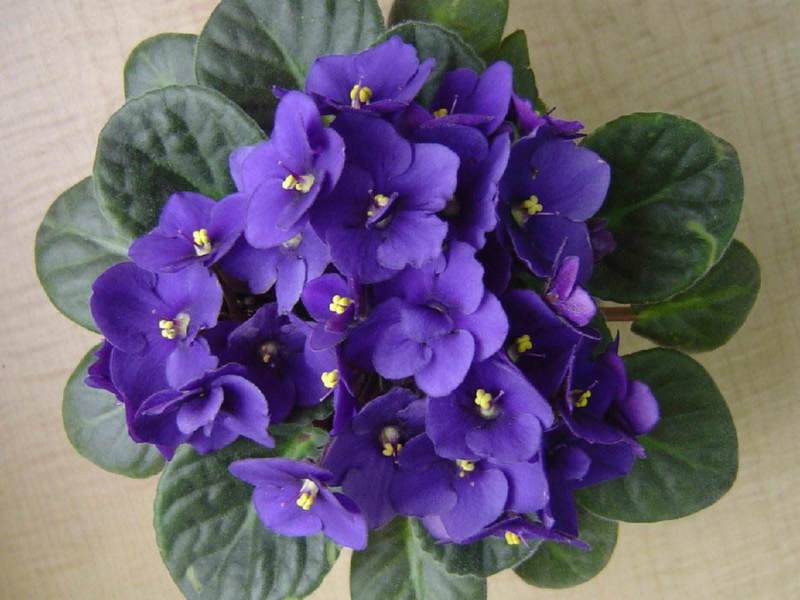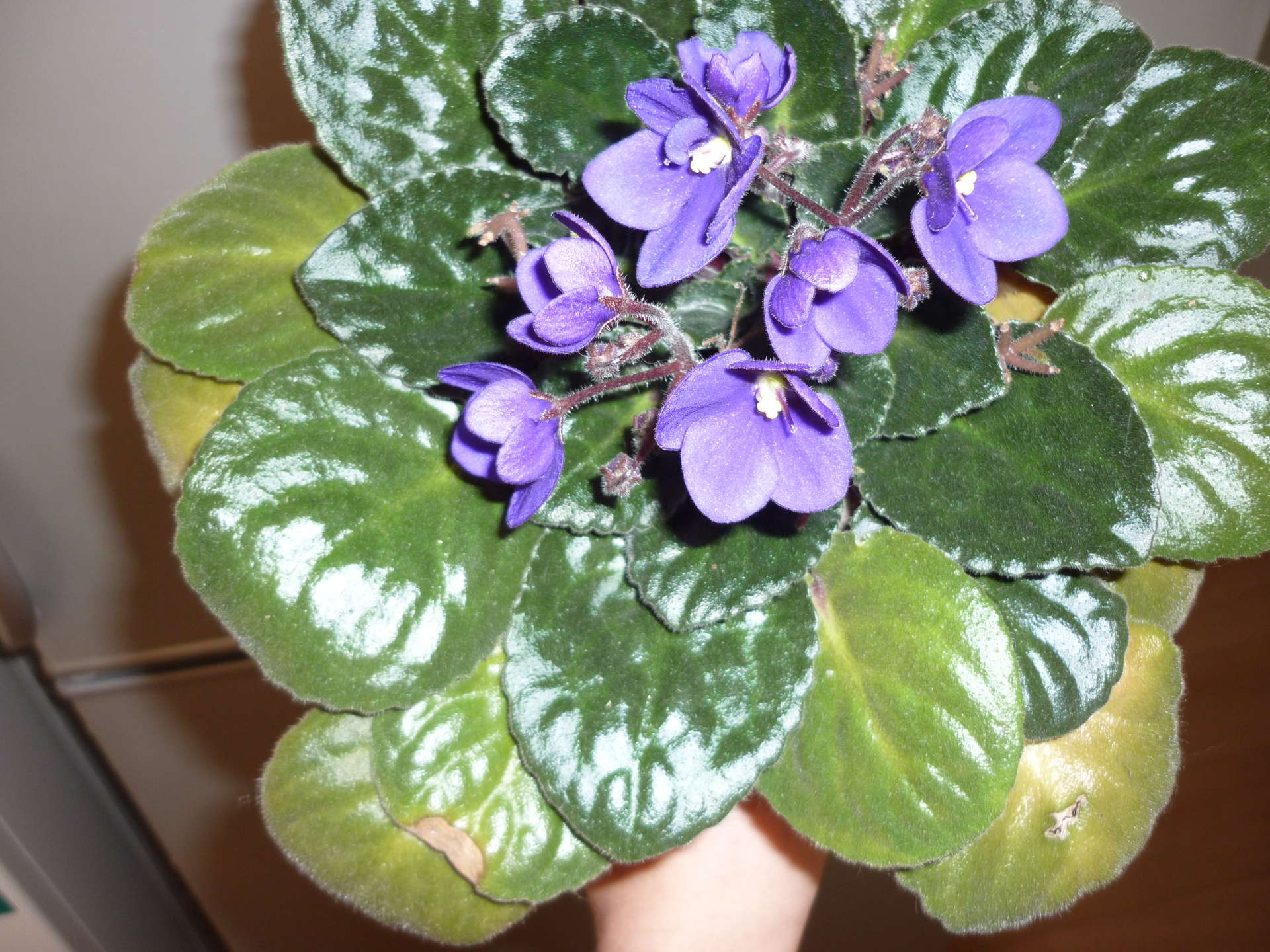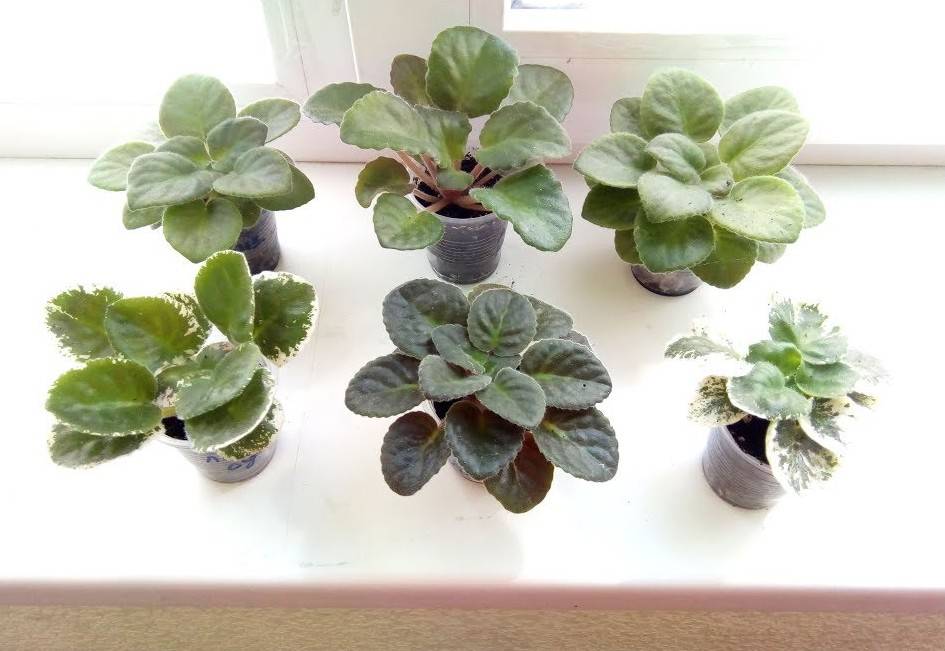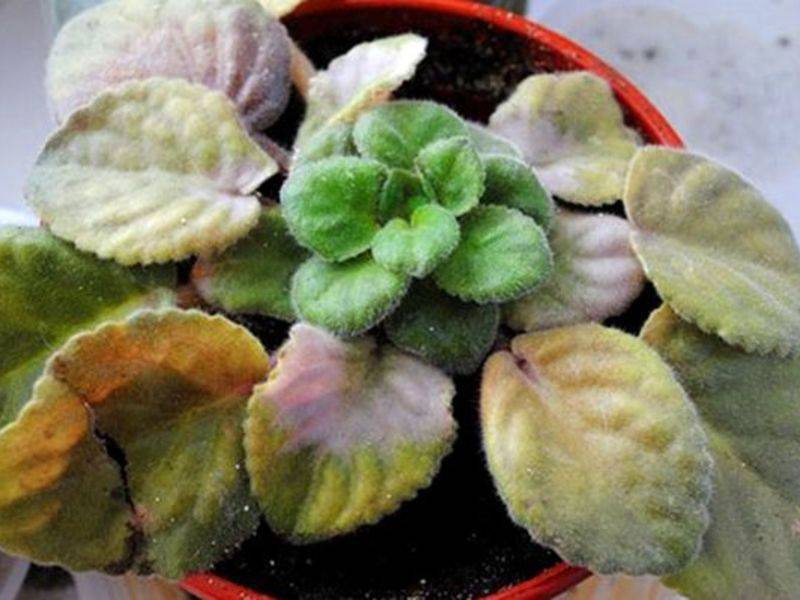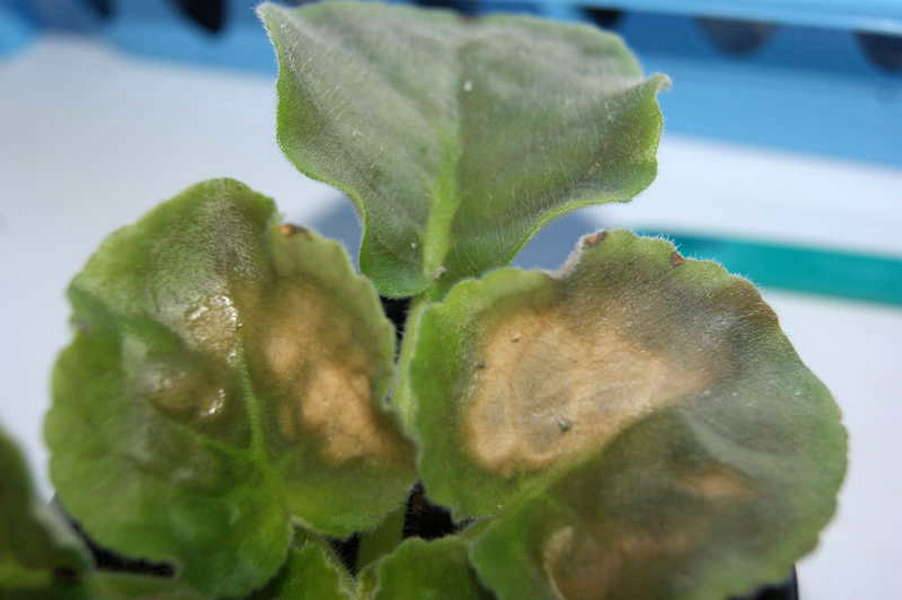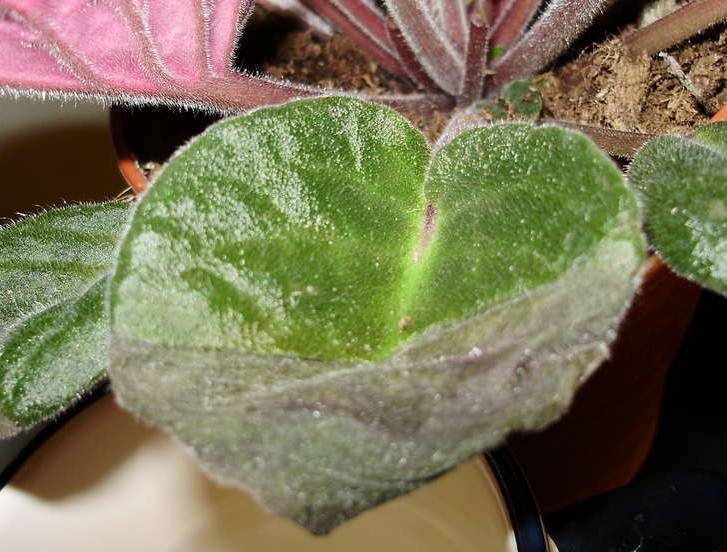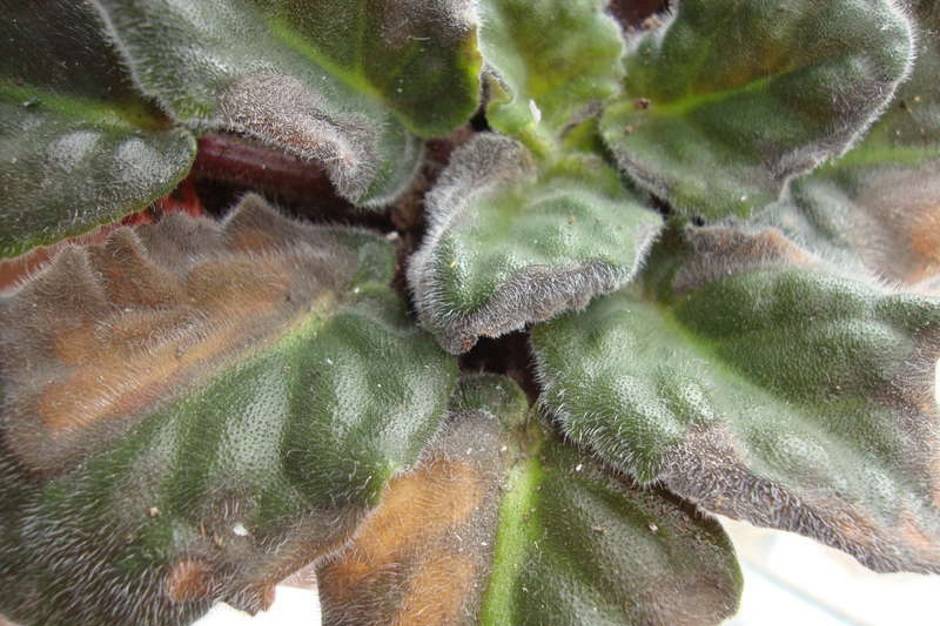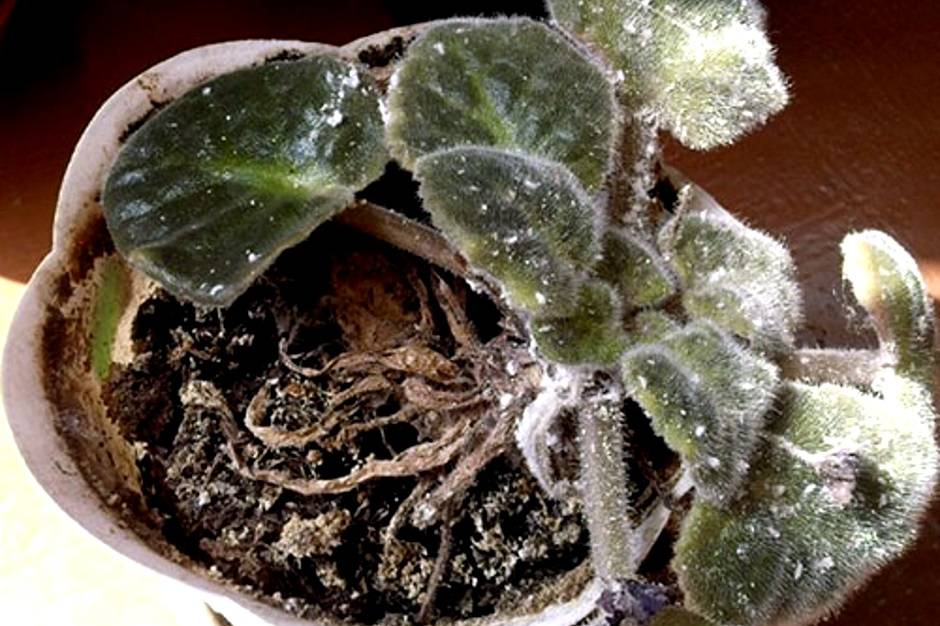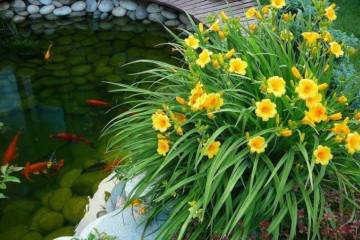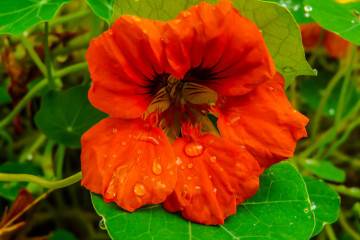Why violets turn yellow leaves: causes and consequences
Content:
Saintpaulia (violet) is perhaps the most common plant in the collections of florists. Almost every indoor plant lover grows a flower in his home. Its demand is due, first of all, to the duration of flowering and a variety of colors of buds. Nowadays, about 8500 varieties of violets have been studied and described. Each of them is unique and finds its lovers. But sometimes the foliage turns pale and loses its decorative effect. Stains may appear on it, or the leaf turns completely yellow. To save your pet, you need to find out the reason.
Basic principles for caring for violets
Newbies are often intimidated by the changes in the violet's appearance. But the pale color, drying and curling of the edge of the leaves does not always mean plant disease. This is most often due to improper care. In more sad cases, you can resort to medicinal chemistry. For example, fungicides "Aktara", "Actellik" and others successfully fight many diseases of flowering plants.
What to do if the leaves of a violet turn yellow? In order not to be mistaken when growing violets, you need to remember a few simple rules:
- Do not expose the flower to direct sunlight. Delicate leaves quickly burn, turn yellow and fall off. It is better to choose a shady area of the room or partial shade.
- Correctly formulate the substrate or buy a special mixture. Professional soils for Saintpaulias have proven themselves very well. When transplanting, give the flower time for acclimatization (greenhouse conditions without watering for 1-2 weeks).
- Arrange wick watering. It's not hard. The design consists of a lower container with water (top dressing) and a pot with a string (wick). The wick is released from the drain hole and lowered to the bottom of the lower container. You don't have to worry about overflowing water.
- Fertilize the flower systematically. The composition of the fertilizer depends on the growing season. First you need to add nitrogen-containing agents, then potassium, phosphorus, magnesium and others. Fertilizers must be added to the water for irrigation.
- Regularly remove dried buds, thin out the bottom layer of leaves.
Why do violets turn yellow leaves
Leaves can turn yellow in a completely healthy plant. Maybe the time has just come. Leaves also age over time. But if a color change is detected in a young bush, the reasons should be found out. If this is a violation of the rules of care, everything will return to normal pretty soon. If the yellowing is associated with the defeat of pathogens, an urgent need to start treatment.
How to find out the reasons
To understand why the leaves of violets turn yellow, you need to quickly find out the causes of the ailment. The moment will not be missed if all flowers are regularly inspected. Given the capriciousness of Saintpaulias, it is advisable to check them daily.
A healthy plant can be described as follows:
- the leaves are collected in the correct rosette and grow almost horizontally;
- the color of the leaf plate is saturated (dark or light depends on the variety).
Vertically growing leaves, spots on violet leaves, the appearance of all sorts of inclusions on the leaves and petioles, loss of turgor and color of the leaves are cause for concern.
There are several reasons for Saintpaulia leaves to turn yellow:
- age-related, that is, natural replacement of old leaves with young ones;
- fungal infection;
- pests (aphids, mites);
- bad soil;
- poor placement;
- deviation from the maintenance regime (watering, fertilizing, critical temperature drop, etc.).
Excessive watering
Excessive watering for Saintpaulias is the most important evil. Stagnant moisture leads to the development of fungal infections in the roots. Pathogenic microflora develops rapidly and covers the entire plant as a whole. If you do not take action, the plant will quickly rot.
Proper watering rules
The best watering method for Saintpaulias is wick. In this case, there is confidence that the plant will only absorb the required amount of moisture (and fertilizer). Of course, you can water at the root, but there is a danger of overflow. In addition, the ingress of water droplets on the leaf plate greatly affects the decorative effect of the flower.
Plant rehabilitation after over-watering
To eliminate the consequences of abundant watering, you will have to conduct a complete revision of the plant. The bush should be pulled out of the pot, all affected parts of the root system and the ground part should be removed, dried, transplanted into new soil.
Wrong ground
If initially a violet is planted in a nutritious soil, then during the year it does not experience a lack of basic trace elements. That is, it will be healthy even without additional feeding. The latter are aimed at increasing green mass and abundant flowering.
If, for some reason, the flower is not transplanted on time, the soil under it becomes skinny. This leads to the death of some of the leaves. First of all, the leaves of the violet turn yellow, the lower rows turn black and dry. After replacing the substrate, the flower quickly recovers.
It is required to make a composition suitable for the plant
Each crop requires its own composition of the planting soil. Looseness is preferable for almost all, since the aeration of the root system necessary for the development depends on it. Also, loose soil does not retain excess moisture. In this regard, for Saintpaulia, the soil should be diluted with hygroscopic components. There are several options for compiling a soil mixture. The simplest thing is to mix peat with river sand or perlite in equal proportions. There are some more complicated options.
First option:
- three parts of garden soil and peat, two parts each - perlite and moss;
- enriched soil - 9 parts and coal - 1 part.
The second option: garden soil - 7 parts and 1 part each of moss, vermiculite (or perlite), coal.
The third option: three parts of peat and one part of sod land, vermiculite (perlite), coal.
To enrich any of these mixtures, you can use:
- dolomite flour;
- shell of eggs;
- humus;
- sand or fine shell rock;
- dry needles.
Ready mixes
There are a lot of soil mixtures for Saintpaulias on sale. Their composition is quite different. Often the soil quickly compresses, loses its looseness. Therefore, with serious intentions to breed a certain number of different violets, it is advisable to purchase professional mixtures. Experienced flower growers do just that. The inconvenience is caused by impressive volumes of soil (200 liters).Plus, they're not cheap. Florists often practice joint purchase of soil. Like-minded people can be found on the Internet, in flower growers' communities, among relatives and friends.
To date, the most demanded is the German-made soil mixture "Klasman TS 1". All the necessary microelements are ideally balanced in it, with optimal acidity, friability, nutritional value.
Rehabilitation after transplant
There are also rules for transplanting. For example, a transplanted violet cannot be watered immediately. It will be correct to cover the flower pot with foil and leave it alone for a couple of weeks.
After this dormant period, watering is gradually resumed. Sometimes it happens that the tips of the leaves of the seedling dry out, begin to darken, and the leaves themselves look wilted. This means that the roots of the young plant have not fully strengthened. They cannot carry moisture to the leaves. In this case, the plant is left in the greenhouse for another 4-5 days. And, of course, bloom should not be allowed. The flower simply does not have enough strength to form the root system and the ground part.
External factors
The decorativeness of violets is strongly influenced by external factors. In its natural environment, the plant receives its nutrition from the soil, and the home flower is completely dependent on the owner. Therefore, the mode of its maintenance should be as close to natural as possible. Only in this case will the flower reach its optimal development indicators.
Heat
Heat, especially direct sunlight in a short period leads to burning and leaf fall. In addition, it is difficult to regulate watering in such conditions. As a result, the flower may die.
To avoid trouble, the violet pot should be placed in the northern part of the dwelling. If this is not possible, it must be carefully shaded or removed deep into the room. Shelves with diffused light work well. Various films, special foil, a large piece of cardboard will help to create a shadow.
To prevent the potted clod from drying out, the flower can be placed in a bowl of room temperature water from time to time. After half an hour, you need to get it out and put it in its place.
Saintpaulias suffer greatly from the proximity of heating devices. Modern plastic window sills do not save them in any way from overheating of the root system. During the heating season, it is highly undesirable to leave flowers in such a place.
Cold
For Saintpaulias, the greatest danger is long-term cold. In such an environment, fungi quickly cling to them. Various rot begins to damage all parts of the bush. Of course, this not only threatens the decorative effect of the violet. If you do not take action, you can completely lose it.
What else can happen to the leaves with improper care
As with any other plant, care mistakes lead to undesirable consequences. Moreover, each reason manifests itself on the flower in its own way:
- lack of lighting leads to lightening of leaves, stretching of peduncles and petioles;
- soil acidification, nitrogen deficiency, excessive watering lead to curling of the leaves;
- watering with cold water, sunburn causes the appearance of light specks at the ends of the sheet plate;
- the appearance of root rot can be understood by wilting and loss of leaf color;
- with gray rot, all parts of the flower can be covered with a characteristic white or grayish bloom;
- with late blight, brown spots appear on the leaves of the violet.
- violation of the temperature regime is accompanied by brown and brownish-rusty dots on the petioles and leaves;
- Excessive watering can cause damage to the flower with black rot.
Correct care
The main reason for the loss of decorative violets is improper care.Even a sick flower can be reanimated. If poor development is associated with disease and pests, appropriate measures can be taken to save the plant. If there is no such threat, then the reason is only in the flaws in leaving. Once they have been removed, the flower will reach its optimum condition very soon.
The main provisions that must be observed at different stages of flower development
Every experienced violet lover deduces his own rules for growing a flower. Many factors contribute to this. Each household has its own atmosphere, temperature regime, illumination, humidity. But there are also mandatory rules. These can be considered:
- quarantine after acquisition for a half month;
- nitrogen fertilization at the beginning of the growing season;
- fertilization with phosphorus-potassium compounds for the entire flowering period;
- regular removal of dead buds and damaged leaves.
As a recommendation, you can take into account the method of watering. For violets, wick irrigation is optimal. Fertilizers are also desirable to be applied in the same way.
What kind of violet to change if nothing helps
It also happens that all efforts to heal home violets are in vain. For no apparent reason, the violet leaves for some reason brighten, begin to dry, flowering is poor, and the bush itself looks dull. In this case, experienced florists recommend choosing a different crop variety. It is likely that indoor conditions are suitable for growing very different varieties. For example, if you cannot breed a constantly flowering variety, you can try growing a seasonally flowering variety.
Violet is a very grateful flower. Even with minimal experience, it is possible to grow a healthy bush. But to get a flower that pleases with nodding flowering all year round is possible only if the rules of cultivation are observed. To facilitate the cultivation of a favorite flower, novice growers can be advised to breed hybrid varieties. Currently, many varieties have been obtained that are resistant to conditions of detention.
